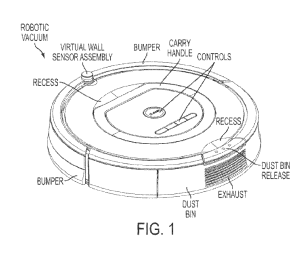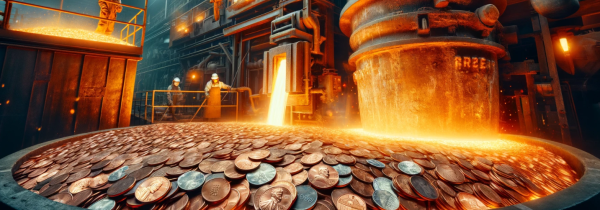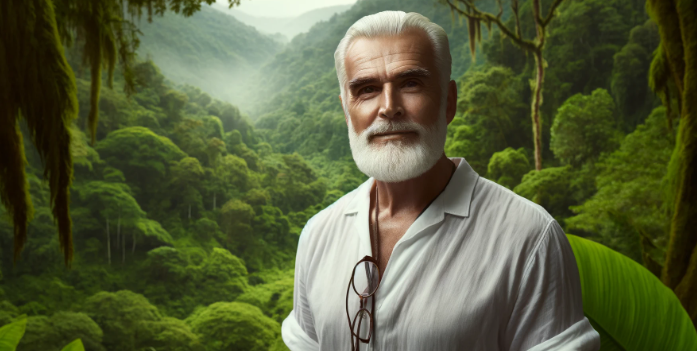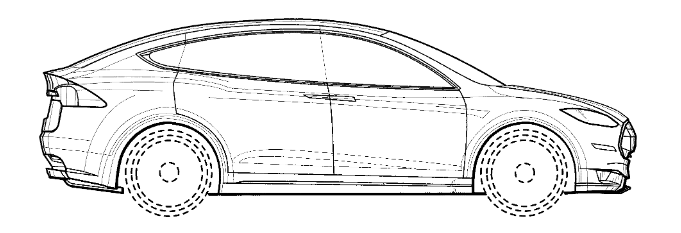Guest Post by Sarah Burstein, Professor of Law at Suffolk University Law School
LKQ Corp. v. GM Global Tech., 21-2348 (Fed. Cir. 2024) (en banc).
In its decision in LKQ v. GM, the en banc Federal Circuit may have raised as many questions as it answered. For now, I’d like to focus on one: What counts as a proper primary reference under LKQ?
While the Federal Circuit overruled the Rosen requirement that a primary reference look “basically the same” as the claimed design, the court did not overrule the requirement that there be a primary reference.
According to the Federal Circuit “In applying Graham factor one, the scope and content of the prior art, a primary reference must be identified.” And, as required by Rosen, that primary reference must still be “something in existence,” not “something that might be brought into existence by selecting individual features from prior art and combining them, particularly where combining them would require modification of every individual feature.” But for this last point, the Federal Circuit doesn’t cite Rosen. Instead, it cites the decision that Rosen cited for that point, In re Jennings, 182 F.2d 207, 208 (CCPA 1950).
So what does Jennings tell us about references and § 103? Not much. Here is the entirety of the CCPA’s discussion of the issue:
In the instant case individual features seem to have been selected from different of the reference patents and compared with features shown in appellant’s drawings. In other words, it seems to have been held that by selecting features taken from five different patents, that is, none feature from one patent, another from another, etc., a device might be considered which would so closely resemble the drawings of appellant that his design would not be patentable over such possible construction.
We feel constrained to disagree with the concurring conclusions reached by the tribunals of the Patent Office.
In considering patentability of a proposed design the appearance of the design must be viewed as a whole, as shown by the drawing, or drawings, and compared with something in existence—not with something that might be brought into existence by selecting individual features from prior art and combining them, particularly where combining them would require modification of every individual feature, as would be required here.
182 F.2d 207 at 208. The Jennings court lists the cited references but does not say—let alone show—which “features seem to have been selected” from each or how they were “compared with features shown in appellant’s drawings.” Nonetheless, the CCPA did helpfully emphasize that, in analyzing whether a design is obvious, the design must be considered as a whole.
Going back to LKQ, the en banc Federal Circuit further tells us that “[t]he primary reference will likely be the closest prior art, i.e., the prior art design that is most visually similar to the claimed design” and that “[t]he primary reference will typically be in the same field of endeavor as the claimed ornamental design’s article of manufacture, but it need not be, so long as it is analogous art.”
So what to make of all of this?
First, and perhaps most importantly, the Federal Circuit’s decision in LKQ is a clear repudiation of the Frankenart approach to design patent obviousness. A challenger (or an examiner) can’t just slice and dice a design claim into “limitations,” find those in the prior art, and then stitch them together into an invalidating reference. That’s a good thing.
Second, we know that a proper primary reference no longer has to look “basically the same” as a claimed design, as that phrase was applied by the Federal Circuit. (For a few examples of the extremely high degree of visual similarity required by the Federal Circuit prior to LKQ, see here and here.)
Nonetheless, the court’s citation to and reaffirmation of the Jennings rule suggests that, even after LKQ, a primary reference must still have at least some quantum of overall visual similarity. If no reference looks at least somewhat similar to the claimed design, then are we not simply “selecting individual features from prior art and combining them” to invalidate the design?
So what about Whitman Saddle? The LKQ court tells us that it doesn’t matter that Whitman Saddle predated the enactment of § 103 and spoke about “invention,” not obviousness. They tell us, without any citation or explanation, that “[t]he reasoning of Whitman Saddle carries over to the modern § 103 standard of obviousness.” (I suspect that Judge Rich would have disagreed.) Perhaps some patent challengers will attempt to argue that, following LKQ, “half is enough”—i.e., that if half of the claimed design can be found in a piece of prior art, that constitutes a proper primary reference. I don’t think that’s right. Whitman Saddle was a case with unusual facts and, in its discussion, the Supreme Court expressly relied on the existence of a “mix and match” custom in the field of saddle design. In that case, the Supreme Court tells us, the issue wasn’t that the different parts of the claimed saddle design could be found in the prior art and hypothetically could have combined but rather because, the Supreme Court tells us, it was “customary” to do so. Without that custom, then the reference combining in Whitman Saddle would seem to be nothing more than the Frankenart approach rejected in Jennings—and now in LKQ. In cases without evidence of a similar type of custom, Whitman Saddle may have limited precedential value.
Third, the LKQ court left open the possibility that the primary reference could be both the “most visually similar to the claimed design” but not the type of reference that could anticipate the claimed design under § 102. That’s because the primary reference need not disclose a design for the same type of article, as required for anticipation. It merely needs to be “analogous art.” Thus, the Federal Circuit has indicated that, for designs, the universe of § 103 prior art is broader than the universe of § 102 prior art. That’s the opposite of how it works in utility patents. That’s not a problem, though. Or even a bad thing. (Indeed, I’ve argued that this is how it should be.) But it’s still notable.
One more point: The LKQ court justified its retention of a primary reference requirement as being necessary to avoid “hindsight.” That may be true in some sense. But, as I’ve written before, requiring a primary reference does more than that—it focuses the inquiry, quite properly and as required by Jennings, on the design as a whole. It recognizes that design patents are fundamentally different than utility patents. They protect fundamentally different innovations (visual designs) in a fundamentally different way (central claiming using images). The Frankenart approach rejected by Jennings—and now by the en banc Federal Circuit in LKQ—essentially asks whether it would have been technically possible to combine preexisting design elements. It tells us nothing about whether it would have been visually obvious to do so. Exactly how this new primary reference requirement will develop remains to be seen. But the Federal Circuit’s renewed and reemphasized focus on the fact that a design must be emphasized as a whole is extremely important and a point not to be missed.
* * *
For more on the history of § 103, design patents, and some thoughts about what types of modifications to a primary reference would be obvious (from a design perspective), see this article.





